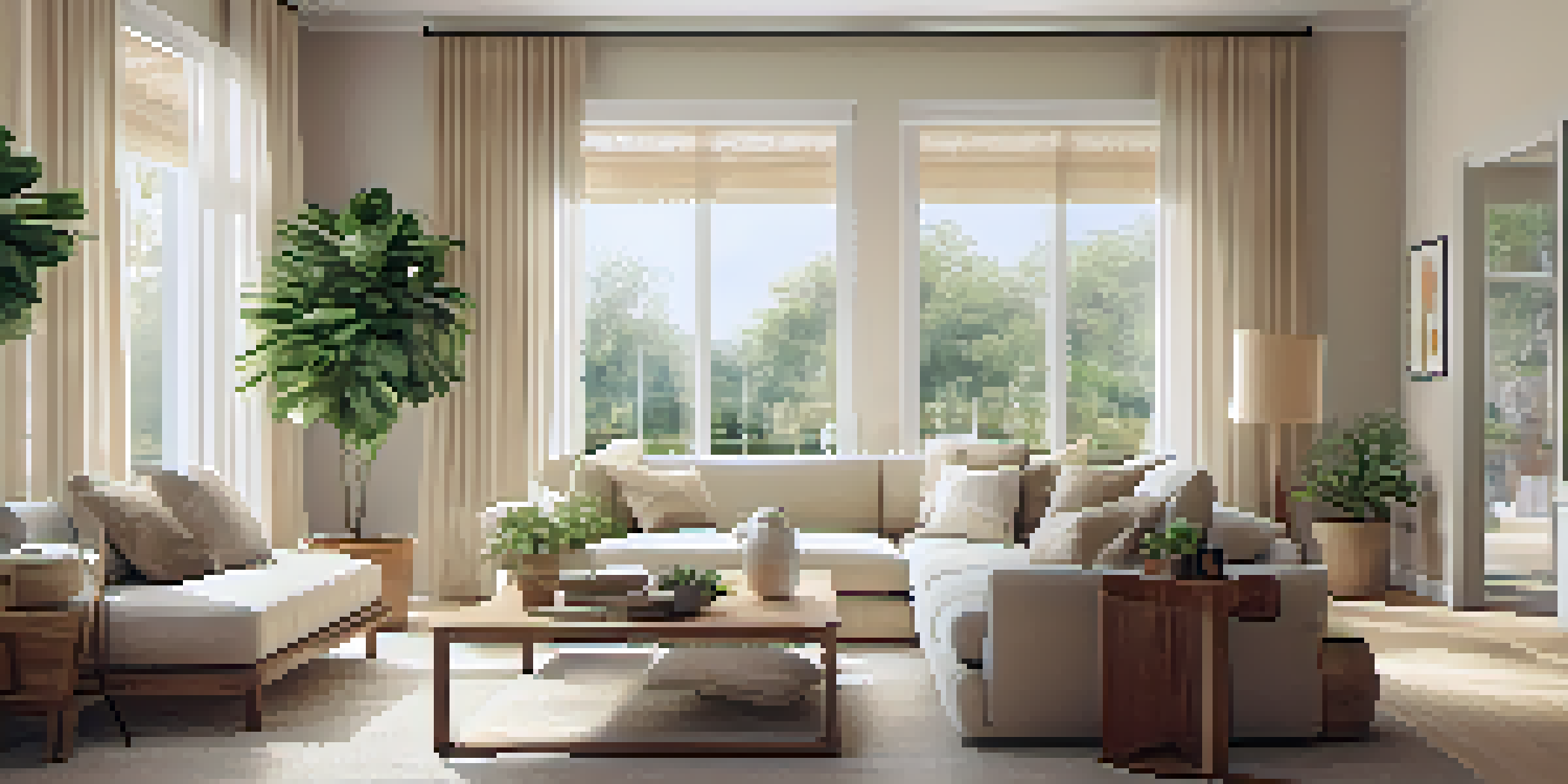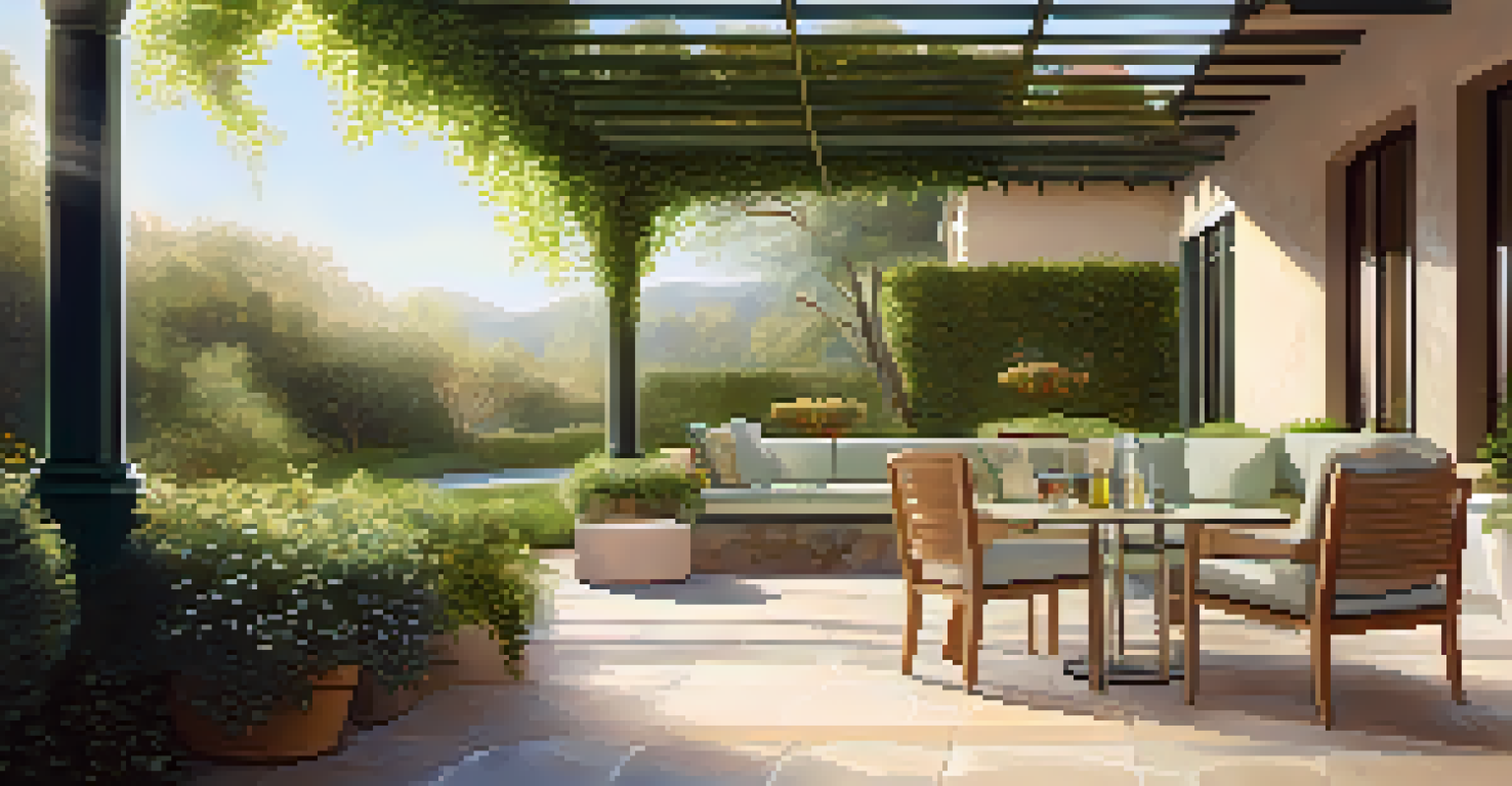Exploring Natural Lighting Solutions for Homes

The Importance of Natural Lighting in Homes
Natural lighting is more than just a design choice; it significantly impacts our mood and well-being. Exposure to sunlight can boost your mood, increase productivity, and even improve sleep quality. Homes bathed in natural light feel more inviting and spacious, making them a pleasure to inhabit.
Light is the key to good design; it is the ultimate tool.
Moreover, natural lighting can help reduce your energy bills. By maximizing the use of daylight, you can lessen the need for artificial lighting during the day. This not only saves you money but also contributes to a more sustainable lifestyle, allowing you to minimize your carbon footprint.
Incorporating natural light into your home can also enhance its aesthetic appeal. Well-lit spaces can highlight architectural features, artworks, and furniture, bringing your interior design to life. This creates an environment that feels vibrant and harmonious, making your home a true reflection of your personality.
Types of Natural Lighting Solutions
When it comes to natural lighting solutions, there are several options to consider. Skylights are a popular choice, allowing light to flood in from above, which can dramatically change the atmosphere of any room. They are particularly effective in areas like kitchens and bathrooms, where natural light can be scarce.

Windows are the most common source of natural light, and their placement can greatly influence the amount of light that enters a space. Consider larger windows, or even floor-to-ceiling options, to maximize light exposure. Additionally, strategically placing mirrors can help reflect light around the room, making it feel even brighter.
Natural Light Boosts Well-Being
Exposure to natural light enhances mood, productivity, and sleep quality while creating a more inviting living space.
Another innovative solution is the use of light tubes, which capture sunlight from the roof and channel it into your home. This technology is especially useful in areas where traditional windows may not fit, such as hallways or small rooms. Light tubes are a fantastic way to brighten up spaces without compromising privacy.
Choosing the Right Window Treatments
Window treatments play a crucial role in controlling the amount of natural light that enters your home. Sheer curtains are a popular choice, as they allow light to filter through while still providing some privacy. These treatments can soften the space and create a warm, inviting ambiance.
The best rooms have something to say about the people who live in them.
On the other hand, blackout curtains can be beneficial in bedrooms or media rooms where complete darkness is preferred. They can block out light when needed but can also be drawn back to let sunlight in during the day. The key is to find a balance that suits your lifestyle and enhances your space.
Additionally, consider the color and material of your window treatments. Lighter colors can help reflect light and brighten up a room, while heavier fabrics can absorb light and create a cozier feel. Choosing the right treatments can significantly impact how natural light interacts with your home.
Designing Open Spaces for Better Light Flow
Open floor plans have become increasingly popular, and for good reason—they allow natural light to flow freely between rooms. By minimizing walls and barriers, you can create a seamless transition that maximizes light exposure throughout your home. This design choice can make spaces feel larger and more connected.
Incorporating sliding or pocket doors can also enhance light flow between rooms. These doors can be opened wide to create an open environment or closed for privacy when needed. This flexibility allows you to enjoy both natural light and seclusion in your living spaces.
Smart Solutions for Light Control
Utilizing technology like smart window shades and photochromic glass can optimize the natural light in your home.
Consider using light-colored walls and flooring to further amplify the effect of natural light in open spaces. Lighter shades can reflect sunlight, making rooms feel airy and bright. This not only enhances the overall ambiance but also creates a more uplifting environment.
Landscaping for Natural Light Optimization
While we often think about the interior when it comes to natural lighting, landscaping can also play a significant role. Trees and shrubs positioned strategically can either block or enhance the amount of sunlight entering your home. It's essential to consider how your outdoor environment interacts with your indoor spaces.
For instance, if your home is shaded by large trees, you might want to trim branches or select plants that grow lower to the ground. On the flip side, if you want to create more shade in the summer while allowing sunlight in during winter, deciduous trees are a great option, as they lose their leaves in colder months.
Creating outdoor spaces that reflect light can also improve the overall natural lighting in your home. Using lighter materials for patios and walkways can bounce sunlight back towards your home. This simple change can enhance the light-filled atmosphere both inside and outside.
Harnessing Technology for Natural Light Control
In today’s world, technology can assist us in optimizing natural lighting in our homes. Smart window shades can be programmed to open and close at specific times, allowing you to control the amount of light entering your space effortlessly. This not only enhances convenience but can also improve energy efficiency.
Another innovative solution is the use of photochromic glass, which adjusts its tint based on the sunlight intensity. This technology helps maintain a comfortable indoor environment by reducing glare and heat during peak sunlight hours. It’s a great way to blend modern technology with natural light management.
Landscaping Affects Light Entry
Strategic landscaping can either enhance or block sunlight, making it crucial to consider outdoor elements for optimal indoor lighting.
Smart home systems also allow you to monitor and adjust indoor lighting based on the amount of natural light available. By integrating sensors, your home can automatically dim artificial lights when natural light is abundant, ensuring a balanced lighting environment throughout the day.
Maintaining Your Natural Lighting Solutions
Once you've implemented natural lighting solutions, regular maintenance is key to keeping them effective. For example, clean your windows and skylights frequently to ensure that dust and grime don’t block precious sunlight. A simple wash can make a significant difference in light quality.
Additionally, regularly check your window treatments for wear and tear. Ensuring that curtains and blinds operate smoothly will help you control light effectively. If you notice any damage, consider replacing them to maintain the aesthetic and functional benefits they provide.

Lastly, keep an eye on your landscaping. As plants grow, they may obstruct light entering your home. Regular pruning and maintenance of your garden can help ensure that your interior remains bright and welcoming, allowing you to enjoy the full benefits of natural lighting.